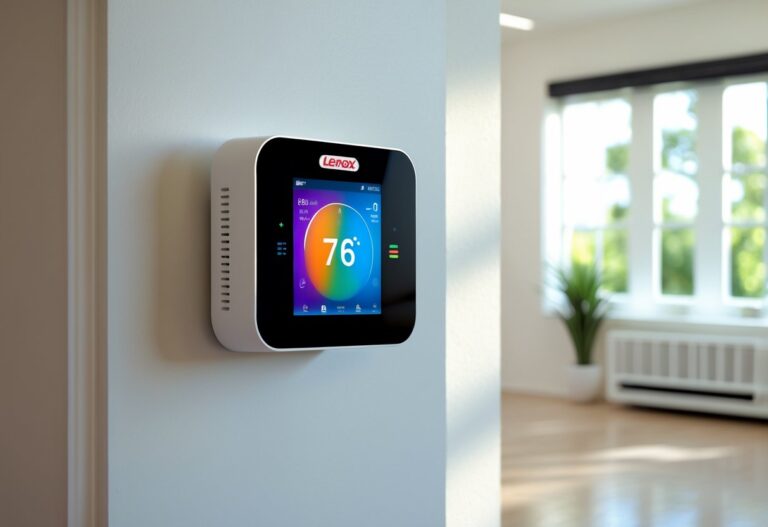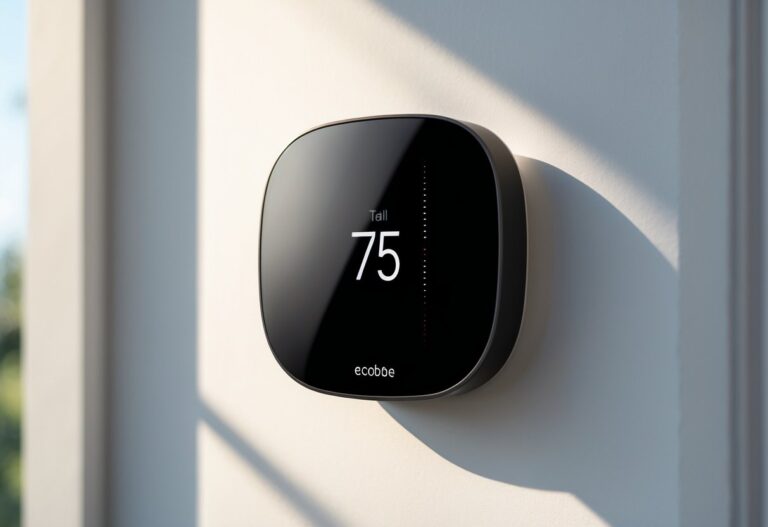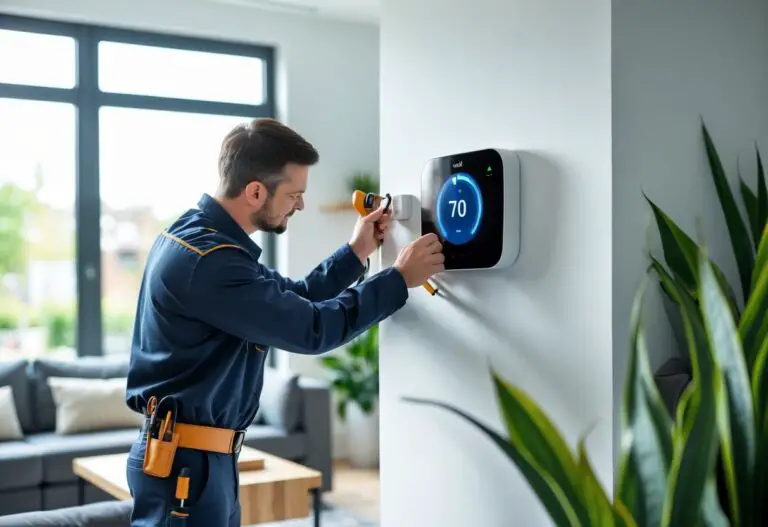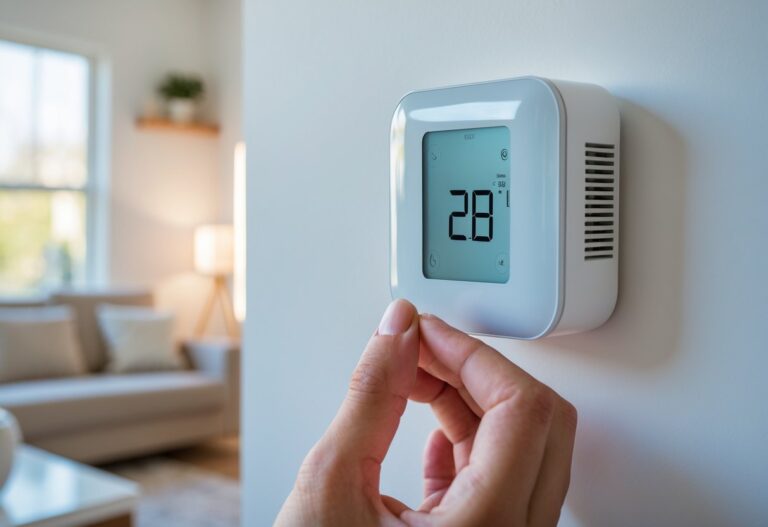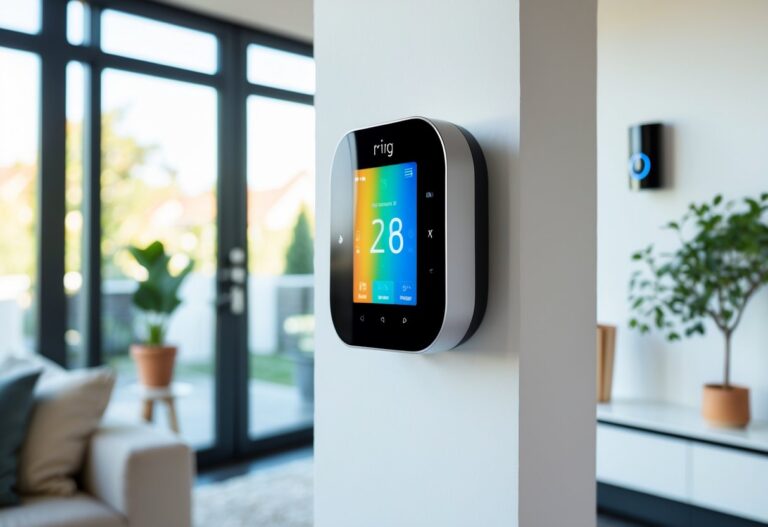Upgrading your home with smart technology is more popular than ever, and you might be wondering if those gadgets really make a difference when it comes time to sell. Among the many options, smart thermostats often stand out for their promises of energy savings and modern convenience. A smart thermostat can increase your home’s value by making it more energy-efficient and attractive to buyers.
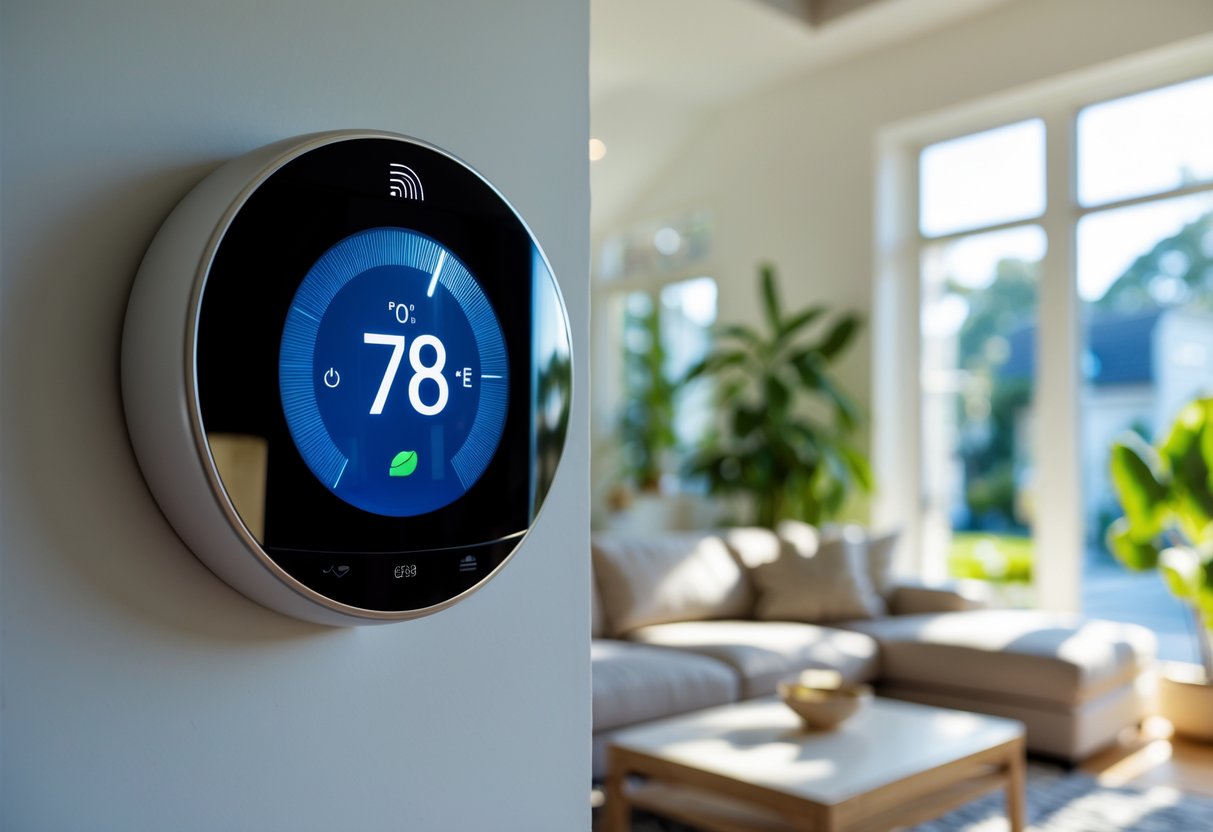
Buyers today are looking for smart features that offer real benefits, not just cool tech. Smart thermostats are easy to use, help lower utility bills, and can even be controlled from your phone. Explore how adding one can set your home apart and possibly put more money in your pocket.
Key Takeaways
- Smart thermostats can improve your home’s market appeal and value.
- Energy efficiency and lower bills make them a top feature for buyers.
- The added value depends on integration and homebuyer interest.
How Smart Thermostats Affect Home Value
A smart thermostat can make your home stand out in a competitive market by providing comfort, convenience, and energy savings. Many buyers care about easy control, lower utility bills, and having the latest smart home devices.
Appeal to Tech-Savvy and Eco-Conscious Buyers
Tech-savvy buyers look for features that let them control their home with their smartphone or voice assistant. A smart thermostat offers this by allowing you to manage temperature settings from anywhere, at any time.
Many eco-conscious buyers want to reduce their home’s environmental impact. Smart thermostats help by cutting energy use when you are away or asleep and by providing energy reports to track usage.
Some smart thermostats even offer integration with solar panels or smart home systems. These features show that your home is up to date and help attract buyers focused on green living and smart technology.
Influence on Resale Value
A smart thermostat can be a small investment with a potential boost for your resale value. While the added dollar amount may be modest compared to big renovations, it can be the detail that sways buyers in your favor.
Energy-efficient upgrades are a selling point for many buyers and real estate agents. Smart thermostats can lower energy bills, and you can share this info with potential buyers.
Recent surveys suggest that homes with smart home devices can sell faster and may attract more offers. The convenience and cost savings add to your home’s value in a way that is easy for buyers to see.
Home Value Compared to Other Smart Devices
Smart thermostats are usually considered higher impact than many other small smart home devices, such as smart lights or voice assistants.
They often have visible savings on utility bills and make daily life easier for homeowners. Buyers see these features as practical and low-maintenance.
Table: Value Comparison of Common Smart Devices
| Device | Ease of Use | Potential Savings | Buyer Appeal |
|---|---|---|---|
| Smart thermostat | High | High | Strong (energy, comfort) |
| Smart lights | Medium | Low | Moderate (convenience) |
| Smart security camera | Medium | N/A | Moderate (safety) |
A smart thermostat is a small investment that can contribute more clearly to home value than some other common smart home upgrades.
Energy Efficiency and Cost Benefits
Installing a smart thermostat can help you use less energy, save on your energy bills, and reduce your home’s impact on the environment. These devices optimize your HVAC system and let you easily control your temperature preferences.
Energy Savings Potential
Smart thermostats use advanced technology to adjust heating and cooling based on your daily routine. They learn your habits and can automatically set the temperature lower when you are out or asleep, and higher when you are home.
Key features include:
- Motion sensors to detect if anyone is home
- Geofencing that changes settings when you leave or arrive
- Scheduling based on your lifestyle
By making your HVAC system run only when needed, you avoid wasting energy. Some models, like those from Nest or Ecobee, claim energy savings of up to 23%. The exact savings depends on your usage and how well your home is insulated. In most cases, you can expect noticeable improvements in energy efficiency when compared to traditional thermostats.
Reduction in Energy Bills
One of the main reasons people switch to a smart thermostat is to lower their energy bills. By cutting down unnecessary heating and cooling, you may notice a drop in your monthly energy costs. According to several studies and manufacturer data, average users save between 10% and 20% on their heating and cooling bills per year.
Smart thermostats give you reports about your energy use, so you can see exactly where your money is going. Some models offer tips on how to save more, such as changing your temperature preferences or reminding you about maintenance. If you have a large home or use your HVAC system often, the savings could be even greater. Over time, these reductions help offset the cost of buying and installing the device.
Environmental Impact of Smart Thermostats
Using less energy not only saves you money, but also helps the environment. When your HVAC system runs efficiently, your home uses less power from the grid. This reduces the amount of fossil fuels burned for electricity and lowers your carbon footprint.
For example:
- One smart thermostat can cut a home’s carbon emissions by about 1.3 tons per year.
- Lower power use leads to cleaner air and less pollution.
You can contribute to environmental protection by using smart features to minimize energy waste without sacrificing comfort. Many smart thermostats are ENERGY STAR certified, which means they meet strict energy efficiency standards set by the government. This makes them a good choice if you care about both savings and sustainability.
Integration with Smart Home Ecosystem
Smart thermostats work best when they fit smoothly into your home’s existing technology. Many modern models offer features that enhance daily living, convenience, and energy savings.
Compatibility with Other Smart Devices
A key factor to consider is whether your smart thermostat can connect with other smart home products. Popular models like Nest and Ecobee are made to work with a range of smart devices such as smart lighting, cameras, and locks.
This compatibility lets you automate routines. For example, you can set your lights to turn off and your thermostat to adjust when you leave home. The more devices you connect, the more personalized your smart home experience can become.
Pick a thermostat that supports common platforms like Zigbee, Z-Wave, or Wi-Fi. This makes it easier for your system to grow as you add more connected devices.
Voice Assistant Integration
Smart thermostats can often be controlled with voice assistants like Google Assistant and Amazon Alexa. This hands-free feature allows you to adjust the temperature by simply giving a voice command from anywhere within earshot.
If you already use voice assistants for other smart devices, adding a compatible thermostat creates a seamless experience. For instance, you can say, “Alexa, set the thermostat to 72 degrees,” and the system will respond instantly.
Compatibility with multiple voice assistants can be especially useful if you have both Google Home and Amazon Alexa devices in your home. It adds flexibility and makes daily tasks easier.
Remote Access and Smartphone Control
Most smart thermostats support remote access through a smartphone app. You can control settings even when you are not at home, view usage reports, and set custom schedules from your phone.
This feature can help you save energy by adjusting the temperature when you’re away. If your plans change or you forget to change your settings, you can do it from anywhere with an internet connection.
These apps often include simple touchscreen controls, usage history, and alerts for system issues. With smartphone control, you always know what’s happening with your home’s climate, making it easier to manage comfort and efficiency.
Factors Influencing the Value Added by Smart Thermostats
Smart thermostats can enhance your home’s appeal through energy savings, updated features, and integration with other smart devices. Several specific factors affect how much value a smart thermostat will add.
Ease of Installation and Setup
How easy it is to install and set up the device can strongly impact its value to buyers. Some models, like the Nest Learning Thermostat, are designed for simple DIY installation. You may only need basic tools and a short amount of time to swap out an old thermostat.
Follow the manufacturer’s step-by-step instructions and pay close attention to wiring. Many smart thermostats walk you through setup on their display or app, which helps avoid confusion. If installation seems too technical, hiring a professional is usually not expensive and can give you peace of mind.
A quick and easy installation is a selling point for buyers who want upgrades without added hassle. If a model needs complicated rewiring or special equipment, it can turn potential buyers away.
Model and Feature Differences
Not all smart thermostats offer the same benefits. Models like the Nest Learning Thermostat and the Ecobee SmartThermostat stand out because of added features such as learning your schedule, voice controls, and integration with smart home platforms. Some let you adjust the temperature from your phone wherever you are, while others use geofencing to adjust settings when you leave or arrive at home.
Common smart thermostat features:
| Feature | Benefit |
|---|---|
| Geofencing | Saves energy when no one is home |
| Learning Algorithms | Adjusts temperature based on your habits |
| Remote App Control | Change settings from anywhere |
| Integration | Works with other smart devices |
Models with more advanced options, like remote sensors, are especially attractive to buyers who value comfort and convenience.
Long-Term Maintenance Considerations
Maintenance needs are important to understand before buying or selling a home with a smart thermostat. You will need to check for software updates, change batteries if applicable, and sometimes clean sensors to keep everything running smoothly.
Battery replacements are usually simple, but failing to keep batteries fresh could make the thermostat stop working. If the device connects to Wi-Fi, you’ll need to ensure the connection stays steady. Regular software updates protect the device from bugs and add new features.
Smart thermostats are generally low maintenance, but even small issues could frustrate buyers who want a “set it and forget it” experience. Well-maintained devices support consistent temperature adjustments and reliable energy savings.
Potential Drawbacks and Limitations
A smart thermostat is not always a perfect fit for every home. If your heating and cooling system is older or not compatible with certain models, installation may be more difficult or require additional adapters.
Some buyers may hesitate if smart thermostats raise privacy concerns, such as location tracking with geofencing features. While most settings can be customized, some buyers prefer simpler, manual thermostats and may see added technology as unnecessary.
Smart thermostats usually cost more than regular models, and the increase in home value might not always match the cost of top-tier options. Certain regions with less demand for smart home technology may see smaller gains in resale value.
